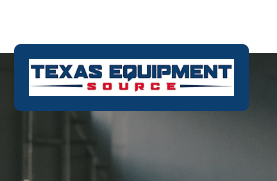Botox for sweat glands has become a sought-after solution for individuals battling hyperhidrosis or excessive sweating. While sweating is a natural body function, overactive sweat glands can lead to discomfort, social embarrassment, and even disruptions in daily life. For people who feel like they’ve tried every antiperspirant and home remedy to no avail, Botox for excessive sweating offers a proven clinical option that targets specific areas of concern. In this comprehensive guide, we highlight the most common treatment zones, how the procedure works, and what patients can expect from start to finish.
What is treatment and how it works
The primary mechanism behind Botox for sweat glands lies in its ability to block nerve signals. Sweat production is controlled by nerves that stimulate eccrine glands using a neurotransmitter called acetylcholine. In people with primary hyperhidrosis, these signals are overactive, leading to constant or unpredictable sweating. Botulinum toxin type A, the active ingredient in Botox, works by interrupting these signals, thereby temporarily disabling the sweat glands in the targeted area.
Here’s how the treatment works step-by-step:
-
The treatment zone is cleaned, and in some cases, a starch-iodine test is used to map the most active sweat glands
-
A fine needle is used to inject small units of Botox into the sweat glands in a grid-like pattern
-
Each treatment session can last between 20 and 45 minutes, depending on the size of the area
-
Most patients begin seeing results within 3–7 days, with full dryness achieved in about 2 weeks
Botox for sweating is not a cure, but it provides a reliable and repeatable solution for long-term sweat reduction in localized zones.
Importance of treatment
Excessive sweating is more than just a minor inconvenience; for many, it’s a constant struggle that impacts confidence, clothing choices, social interactions, and even job performance. Targeting sweat glands with Botox helps relieve the anxiety and discomfort that comes with persistent perspiration.
Why treatment matters:
-
Reduces physical discomfort caused by damp skin and clothes
-
Prevents body odor, rashes, and skin infections
-
Increases clothing freedom—light colors, silks, and tight garments become wearable
-
Eliminates the need for constant reapplication of deodorants or powders
-
Supports emotional well-being by reducing public embarrassment
By focusing on Botox for sweat control, patients experience not just a physical transformation but also a significant psychological improvement.
Types of treatment
Botox for sweat glands can be applied to various parts of the body, depending on the severity and location of excessive sweating. Each area requires a different approach, injection pattern, and dosage. Below are the most common treatment areas.
Underarms (Axillary Hyperhidrosis)
-
The most frequently treated zone
-
20–30 injections per armpit are standard
-
Provides dryness for 4–6 months
-
Low risk and high patient satisfaction
Hands (Palmar Hyperhidrosis)
-
Especially helpful for professionals or individuals with public-facing roles
-
May require numbing cream or nerve block to minimize discomfort
-
Some patients may experience temporary muscle weakness
Feet (Plantar Hyperhidrosis)
-
Similar to hands in terms of technique and sensitivity
-
Numbing is often needed due to foot sensitivity
-
Results last about 3–4 months on average
Forehead and Scalp (Craniofacial Hyperhidrosis)
-
Targets visible sweat on the face or hairline
-
Requires careful injection to avoid impacting facial expressions
-
Often used in combination with topical treatments
Chest and Back
-
Less common but useful in specific cases
-
Usually performed when sweating is localized to small zones
-
Typically involves multiple injections in the mapped area
Groin Area
-
Delicate zone that requires advanced expertise
-
Helps manage inner thigh, pubic, or perineal sweating
-
Greatly enhances comfort in tight clothing or during workouts
Each of these areas can be effectively managed using Botox to block overactive sweat glands, offering patients a flexible and customizable solution to a frustrating problem.
Preparation and aftercare
Proper Botox sweat treatment preparation can make a significant difference in both comfort and effectiveness. Likewise, aftercare supports faster healing and better results.
Pre-treatment instructions:
-
Avoid applying deodorants, powders, or skincare products on the day of the session
-
Do not shave the area within 24 hours before treatment
-
Refrain from alcohol and blood-thinners for 48 hours
-
Wear comfortable, loose-fitting clothing
-
Stay well hydrated
Post-treatment care:
-
Do not exercise or expose the treated area to heat for at least 24–48 hours
-
Avoid using deodorants or creams until the following day
-
Refrain from massaging or rubbing the injection area
-
Apply ice if you experience mild swelling or discomfort
-
Avoid makeup or skincare products on the face if facial zones are treated
Most people return to work or regular activities immediately after the procedure. For hands or feet, a brief recovery period may be needed due to soreness or sensitivity.
Ideal candidate and how to choose the right clinic
Botox for overactive sweat glands is best suited for individuals who have not found relief from standard treatments like topical antiperspirants or prescription medications. Understanding who can benefit most ensures the success of the therapy.
You may be an ideal candidate if you:
-
Suffer from excessive sweating that interferes with daily life
-
Have localized sweating (armpits, hands, feet, face, etc.)
-
Are physically healthy and not allergic to Botox ingredients
-
Are not currently pregnant or breastfeeding
-
Understand the treatment is temporary and requires maintenance
Selecting the right provider is crucial for safe and effective results. When choosing where to receive Botox for sweat gland treatment, look for the following:
-
Proven experience in medical Botox, not just cosmetic
-
A clear understanding of sweat mapping techniques
-
Transparent about how many units will be used and the expected duration
-
Hygienic, sterile environment that follows all safety standards
-
Positive testimonials or feedback from past clients
Investing in a skilled practitioner reduces the chance of side effects and ensures maximum dryness with minimal risk.
Risks, benefits, FAQs and conclusion
Like all medical procedures, Botox for excessive sweating comes with potential risks, although serious complications are rare. Understanding both the pros and cons helps set realistic expectations.
Risks and side effects may include:
-
Mild redness, swelling, or bruising at injection sites
-
Temporary numbness or weakness (especially in hands)
-
Headache or flu-like symptoms in some individuals
-
Dryness or tingling sensation in treated zones
-
In rare cases, allergic reactions
Benefits of Botox sweat treatment:
-
Targets only the affected area without interfering with overall sweating
-
Fast results and long-lasting relief
-
Enhances comfort, hygiene, and confidence
-
Can be repeated safely for continuous results
-
No surgery or downtime required
Frequently Asked Questions:
How often do I need treatment?
Most people repeat the treatment every 4–6 months for optimal results.
Is Botox safe for long-term use?
Yes, when administered by a qualified professional, repeated sessions are safe.
Can I use Botox for multiple sweat areas at once?
Yes, several zones can be treated during one session depending on your needs.
Does the sweat just shift to other areas?
No, compensatory sweating is rare with localized Botox treatments.
What does the procedure feel like?
A series of small pinches. Discomfort is generally mild and brief.
Can it stop sweating completely?
Only in the targeted area. Your body still sweats elsewhere to regulate temperature.
In conclusion, Botox for sweat glands has become a trusted, effective solution for individuals facing localized excessive sweating. Whether it’s the underarms, hands, feet, or face, this treatment provides meaningful, long-lasting relief without invasive surgery or downtime. With proper preparation, skilled administration, and consistent follow-up, Botox for hyperhidrosis helps regain control over your body—and your confidence.







0 Comments